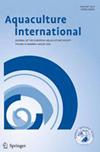Integrative histological and transcriptomic profiling of the hepatopancreas and ovary reveals key regulators of ovarian redevelopment in the giant freshwater prawn Macrobrachium rosenbergii
Abstract
The giant freshwater prawn Macrobrachium rosenbergii is highly valued in commercial aquaculture. Although the patterns and molecular mechanisms of ovarian development have been studied to some extent, the nutritional conversion and interactions between the hepatopancreas and ovaries during ovarian development of M. rosenbergii remain unclear. In this study, histological observations and transcriptomic analyses were combined to investigate the dynamic changes in histological morphology and gene expression patterns of the hepatopancreas and ovaries during five stages of ovarian redevelopment in M. rosenbergii. Additionally, the correlation between the gonadosomatic index (GSI) and hepatosomatic index (HSI) was analyzed. The results revealed a significant negative correlation between GSI and HSI, indicating a reciprocal regulatory relationship between the hepatopancreas and ovaries during ovarian redevelopment. Histological analysis showed a marked decrease in the number of resorptive cells in the hepatopancreatic tubules following ovulation, further supporting their interaction. Furthermore, protein–protein interaction network and KEGG enrichment analyses revealed significant activation of the cell cycle and spliceosome pathways in the hepatopancreas during the ovarian recovery stage. These findings suggest that the hepatopancreas not only provides nutrition and energy to M. rosenbergii but also contributes to ovarian redevelopment by regulating cell proliferation and gene expression at the molecular level. This study provides new insights into the multifaceted roles of the hepatopancreas during ovarian redevelopment in crustaceans, contributing valuable information to the field of reproductive physiology.

 求助内容:
求助内容: 应助结果提醒方式:
应助结果提醒方式:


